| Listing 1 - 10 of 17 | << page >> |
Sort by
|

ISBN: 0306465205 0306484064 Year: 2001 Publisher: New York, NY : Springer US : Imprint: Springer,
Abstract | Keywords | Export | Availability | Bookmark
 Loading...
Loading...Choose an application
- Reference Manager
- EndNote
- RefWorks (Direct export to RefWorks)
At the beginning of the twentieth century, engineers and technologists would have recognized the importance of adhesion in two main aspects: First, in the display of friction between surfaces — at the time a topic of growing importance to engineers; the second in crafts requiring the joining of materials — principally wood—to form engineering structures. While physical scientists would have admitted the adhesive properties of glues, gels, and certain pastes, they regarded them as materials of uncertain formulation, too impure to be amenable to precise experiment. Biological scientists were aware also of adhesive phenomena, but the science was supported by documentation rather than understanding. By the end of the century, adhesion and adhesives were playing a crucial and deliberate role in the formulation of materials, in the design and manufacture of engineering structures without weakening rivets or pins, and in the use of thin sections and intricate shapes. Miniaturization down to the micro- and now to the nano-level of mechanical, electrical, electronic, and optical devices relied heavily on the understanding and the technology of adhesion. For most of the century, physical scientists were aware that the states of matter, whether gas, liquid, or solid, were determined by the competition between thermal energy and int- molecular binding forces. Then the solid state had to be differentiated into crystals, amorphous glasses, metals, etc. , so the importance of the molecular attractions in determining stiffness and strength became clearer.
Adhesion. --- Surface chemistry. --- Chemistry. --- Physical chemistry. --- Polymers. --- Physical Chemistry. --- Polymer Sciences. --- Chemistry, Physical organic. --- Polymers . --- Polymere --- Polymeride --- Polymers and polymerization --- Macromolecules --- Chemistry, Theoretical --- Physical chemistry --- Theoretical chemistry --- Chemistry

ISBN: 128020527X 9786610205271 0306469235 0306464624 Year: 2001 Publisher: New York : Kluwer Academic Publishers,
Abstract | Keywords | Export | Availability | Bookmark
 Loading...
Loading...Choose an application
- Reference Manager
- EndNote
- RefWorks (Direct export to RefWorks)
Recognized experts present incisive analysis of both fundamental and applied problems in this continuation of a highly-acclaimed series. Topics discussed include: The way in which electrochemical systems may function as on a single electrode; The foundational area of voltaic measurements at liquid interfaces; Direct methanol fuel cells, which would avoid the unpleasant necessity faced by the current general of fuel cells - namely, using hydrogen; Dynamic processes in molten salts; Electrochemical techniques and Microbial Induced Corrosion (MIC).
Electrochemistry. --- Chemistry, Physical and theoretical. --- Chemistry. --- Chemistry, Physical organic. --- Physical Chemistry. --- Physical chemistry. --- Chemistry, Theoretical --- Physical chemistry --- Theoretical chemistry --- Chemistry --- Chemistry, Physical and theoretical --- Surface chemistry.

ISBN: 1280200995 9786610200993 0306476134 0792371526 Year: 2001 Publisher: Dordrecht, Netherlands : Kluwer Academic Publishers,
Abstract | Keywords | Export | Availability | Bookmark
 Loading...
Loading...Choose an application
- Reference Manager
- EndNote
- RefWorks (Direct export to RefWorks)
This volume is the outgrowth of a workshop held in October, 2000 at the Institute for Theoretical Atomic and Molecular Physics at the Harvard- Smithsonian Center for Astrophysics in Cambridge, MA. The aim of this book (similar in theme to the workshop) is to present an overview of new directions in antimatter physics and chemistry research. The emphasis is on positron and positronium interactions both with themselves and with ordinary matter. The timeliness of this subject comes from several considerations. New concepts for intense positron sources and the development of positron accumulators and trap-based positron beams provide qualitatively new experimental capabilities. On the theoretical side, the ability to model complex systems and complex processes has increased dramatically in recent years, due in part to progress in computational physics. There are presently an intriguing variety of phenomena that await theoretical explanation. It is virtually assured that the new experimental capabilities in this area will lead to a rapid expansion of this list. This book is organized into four sections: The first section discusses potential new experimental capabilities and the uses and the progress that might be made with them. The second section discusses topics involving antihydrogen and many-body phenomena, including Bose condensation of positronium atoms and positron interactions with materials. The final two sections treat a range of topics involving positron and positronium interactions with atoms and molecules.
Antimatter. --- Antinucleons. --- Chemistry, Physical organic. --- Atomic, Molecular, Optical and Plasma Physics. --- Physical Chemistry. --- Condensed Matter Physics. --- Chemistry, Physical organic --- Chemistry, Organic --- Chemistry, Physical and theoretical --- Atoms. --- Physics. --- Physical chemistry. --- Condensed matter. --- Condensed materials --- Condensed media --- Condensed phase --- Materials, Condensed --- Media, Condensed --- Phase, Condensed --- Liquids --- Matter --- Solids --- Chemistry, Theoretical --- Physical chemistry --- Theoretical chemistry --- Chemistry --- Natural philosophy --- Philosophy, Natural --- Physical sciences --- Dynamics --- Stereochemistry --- Constitution --- Properties
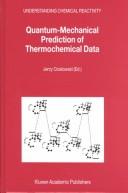
ISBN: 1280201177 9786610201174 0306476320 0792370775 Year: 2001 Publisher: The Hague : Springer,
Abstract | Keywords | Export | Availability | Bookmark
 Loading...
Loading...Choose an application
- Reference Manager
- EndNote
- RefWorks (Direct export to RefWorks)
For the first time in the history of chemical sciences, theoretical predictions have achieved the level of reliability that allows them to - val experimental measurements in accuracy on a routine basis. Only a decade ago, such a statement would be valid only with severe qualifi- tions as high-level quantum-chemical calculations were feasible only for molecules composed of a few atoms. Improvements in both hardware performance and the level of sophistication of electronic structure me- ods have contributed equally to this impressive progress that has taken place only recently. The contemporary chemist interested in predicting thermochemical properties such as the standard enthalpy of formation has at his disposal a wide selection of theoretical approaches, differing in the range of app- cability, computational cost, and the expected accuracy. Ranging from high-level treatments of electron correlation used in conjunction with extrapolative schemes to semiempirical methods, these approaches have well-known advantages and shortcomings that determine their usefulness in studies of particular types of chemical species. The growing number of published computational schemes and their variants, testing sets, and performance statistics often makes it difficult for a scientist not well versed in the language of quantum theory to identify the method most adequate for his research needs.
Thermochemistry. --- Quantum chemistry. --- Quantum chemistry --- Chemical thermodynamics --- fysicochemie --- Chemistry. --- Physical chemistry. --- Physical Chemistry. --- Chemistry, Physical organic. --- Chemistry, Theoretical --- Physical chemistry --- Theoretical chemistry --- Chemistry --- Data processing. --- Chemistry, Quantum --- Chemistry, Physical and theoretical --- Quantum theory --- Excited state chemistry --- Thermodynamics --- Heat

ISBN: 1280043547 9786610043545 0306468921 0792374479 Year: 2001 Publisher: New York, NY : Springer US : Imprint: Springer,
Abstract | Keywords | Export | Availability | Bookmark
 Loading...
Loading...Choose an application
- Reference Manager
- EndNote
- RefWorks (Direct export to RefWorks)
Analytical Molecular Biology illustrates the importance of simple analytical methods applied to some basic molecular biology problems, with an emphasis on the importance of biological problems, rather than the complexity of mathematics. First, the book examines crucial experimental data for a specific problem. Mathematical models will then be constructed with explicit inclusion of biological facts. From such models, predictions can be deduced and then suggest further experimental studies. A few important molecular biology problems will be discussed in the order of the complexity of the mathematical models. Based on such illustrations, the readers can then develop their own analytical methods to study their own problems. This book is for anyone who knows they need to learn how to apply mathematical models to biology, but doesn't necessarily want to, from practicing researchers looking to acquire more analytical tools to advanced students seeking a clear, explanatory text.
Molecular biology --- Mathematics. --- Morphology (Animals). --- Immunology. --- Chemistry, Physical organic. --- Human genetics. --- Biochemistry. --- Animal Anatomy / Morphology / Histology. --- Physical Chemistry. --- Human Genetics. --- Biochemistry, general. --- Animal anatomy. --- Physical chemistry. --- Biological chemistry --- Chemical composition of organisms --- Organisms --- Physiological chemistry --- Biology --- Chemistry --- Medical sciences --- Genetics --- Heredity, Human --- Human biology --- Physical anthropology --- Chemistry, Theoretical --- Physical chemistry --- Theoretical chemistry --- Immunobiology --- Life sciences --- Serology --- Animal anatomy --- Animals --- Physiology --- Composition --- Anatomy
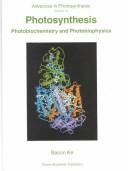
ISBN: 0306481367 0792363345 Year: 2001 Publisher: Dordrecht : Springer Netherlands : Imprint: Springer,
Abstract | Keywords | Export | Availability | Bookmark
 Loading...
Loading...Choose an application
- Reference Manager
- EndNote
- RefWorks (Direct export to RefWorks)
Photosynthesis: Photobiochemistry and Photobiophysics is the first single-authored book in the Advances in Photosynthesis Series. It provides an overview of the light reactions and electron transfers in both oxygenic and anoxygenic photosynthesis. The scope of the book is characterized by the time frame in which the light reactions and the subsequent electron transfers take place, namely between <=10-12 and >=10-3 second. The book is divided into five parts: An Overview; Bacterial Photosynthesis; Photosystem II & Oxygen Evolution; Photosystem I; and Proton Transport and Photophosphorylation. In discussing the structure and function of various protein complexes, we begin with an introductory chapter, followed by chapters on light-harvesting complexes, the primary electron donors and the primary electron acceptors, and finally the secondary electron donors. The discussion on electron acceptors is presented in the order of their discovery to convey a sense of history, in parallel with the advancement in instrumentation of increasing time resolution. The book includes a large number of stereo pictures showing the three-dimensional structure of various photosynthetic proteins, which can be easily viewed with unaided eyes. This book is designed to be used as a textbook in a graduate or upper-division undergraduate course in photosynthesis, photobiology, plant physiology, biochemistry, and biophysics; it is equally suitable as a resource book for students, teachers, and researchers in the areas of molecular and cellular biology, integrative biology, microbiology, and plant biology.
Photosynthesis. --- Plant physiology. --- Chemistry, Physical organic. --- Chemistry, Organic. --- Plant Physiology. --- Physical Chemistry. --- Biological and Medical Physics, Biophysics. --- Organic Chemistry. --- Physical chemistry. --- Biophysics. --- Biological physics. --- Organic chemistry. --- Organic chemistry --- Chemistry --- Biological physics --- Biology --- Medical sciences --- Physics --- Chemistry, Theoretical --- Physical chemistry --- Theoretical chemistry --- Botany --- Plants --- Physiology

ISBN: 1280201525 9786610201525 0306476673 1402001274 Year: 2001 Publisher: Amsterdam, Netherlands : Springer,
Abstract | Keywords | Export | Availability | Bookmark
 Loading...
Loading...Choose an application
- Reference Manager
- EndNote
- RefWorks (Direct export to RefWorks)
Heterogeneous catalysis is a fascinating and complex subject of utmost importance in the present day. Its immense technological and economical importance and the inherent complexity of the catalytic phenomena have stimulated theoretical and experimental studies by a broad spectrum of scientists, including chemists, physicists, chemical engineers, and material scientists. Computational and theoretical techniques are now having a major impact in this field. This book aims to illustrate and discuss the subject of heterogeneous catalysis and to show the current capabilities of the theoretical and computational methods for studying the various steps (diffusion, adsorption, chemical reaction) of heterogeneous catalytic process involving zeolites, metal oxides, and transition metal surfaces. The book covers: the use of techniques of computational chemistry to simulate zeolites, metallic and bimetallic surfaces, and oxide-supported metals; the impact of simulation methods on the understanding of the diffusion and adsorption of molecules and cations within the pores of zeolites, and also on the adsorption of molecules on metal and metal-oxide surfaces; and the applications of quantum-mechanical methods to the study of the reaction mechanism and pathways of the adsorbed molecules. This book is recommended primarily to scientists and graduate students conducting research in the fields of heterogeneous catalysis and surface science. It will also be valuable to advanced undergraduate students wishing to become acquainted with the latest developments in these exciting fields of research, and to experimentalists seeking theoretical support for interpreting their results.
Heterogeneous catalysis. --- Catalysis. --- Chemistry, Physical organic. --- Chemistry. --- Physical Chemistry. --- Computer Applications in Chemistry. --- Theoretical and Computational Chemistry. --- Physical chemistry. --- Chemoinformatics. --- Chemistry, Physical and theoretical. --- Chemistry, Theoretical --- Physical chemistry --- Theoretical chemistry --- Chemistry --- Chemical informatics --- Chemiinformatics --- Chemoinformatics --- Chemistry informatics --- Information science --- Computational chemistry --- Activation (Chemistry) --- Chemistry, Physical and theoretical --- Surface chemistry --- Data processing --- Heterogeneous catalysis
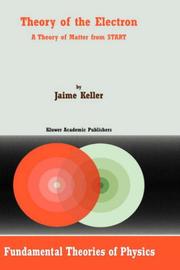
ISBN: 128020687X 9786610206872 0306471329 0792368193 Year: 2001 Publisher: Dordrecht ; London : Kluwer Academic,
Abstract | Keywords | Export | Availability | Bookmark
 Loading...
Loading...Choose an application
- Reference Manager
- EndNote
- RefWorks (Direct export to RefWorks)
In the first century after its discovery, the electron has come to be a fundamental element in the analysis of physical aspects of nature. This book is devoted to the construction of a deductive theory of the electron, starting from first principles and using a simple mathematical tool, geometric analysis. Its purpose is to present a comprehensive theory of the electron to the point where a connection can be made with the main approaches to the study of the electron in physics. The introduction describes the methodology. Chapter 2 presents the concept of space-time-action relativity theory and in chapter 3 the mathematical structures describing action are analyzed. Chapters 4, 5, and 6 deal with the theory of the electron in a series of aspects where the geometrical analysis is more relevant. Finally in chapter 7 the form of geometrical analysis used in the book is presented to elucidate the broad range of topics which are covered and the range of mathematical structures which are implicitly or explicitly included. The book is directed to two different audiences of graduate students and research scientists: primarily to theoretical physicists in the field of electron physics as well as those in the more general field of quantum mechanics, elementary particle physics, and general relativity; secondly, to mathematicians in the field of geometric analysis.
Electrons. --- Space and time. --- Nuclear physics. --- Quantum theory. --- Chemistry, Physical organic. --- Theoretical, Mathematical and Computational Physics. --- Nuclear Physics, Heavy Ions, Hadrons. --- Quantum Physics. --- Physical Chemistry. --- Chemistry, Physical organic --- Chemistry, Organic --- Chemistry, Physical and theoretical --- Quantum dynamics --- Quantum mechanics --- Quantum physics --- Physics --- Mechanics --- Thermodynamics --- Atomic nuclei --- Atoms, Nuclei of --- Nucleus of the atom --- Mathematical physics. --- Heavy ions. --- Quantum physics. --- Physical chemistry. --- Chemistry, Theoretical --- Physical chemistry --- Theoretical chemistry --- Chemistry --- Ions --- Physical mathematics --- Mathematics --- Space of more than three dimensions --- Space-time --- Space-time continuum --- Space-times --- Spacetime --- Time and space --- Fourth dimension --- Infinite --- Metaphysics --- Philosophy --- Space sciences --- Time --- Beginning --- Hyperspace --- Relativity (Physics) --- Corpuscular theory of matter --- Atoms --- Leptons (Nuclear physics) --- Matter --- Particles (Nuclear physics) --- Cathode rays --- Positrons --- Constitution
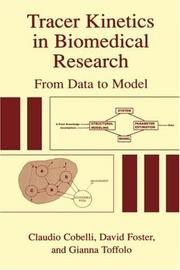
ISBN: 1280042974 9786610042975 0306468336 9780306464270 0306464276 9780306468339 Year: 2001 Publisher: New York, New York : Plenum Press,
Abstract | Keywords | Export | Availability | Bookmark
 Loading...
Loading...Choose an application
- Reference Manager
- EndNote
- RefWorks (Direct export to RefWorks)
1. Introduction. 2. Fundamentals of Tracer Kinetics. 3. The Noncompartmental Model of Multipool Systems. 4. The Compartmental Model. 5. Identifiability of the Tracer Model. 6. Using the Tracer Model to Estimate Kinetic Parameters. 7. Compartmental Versus Noncompartmental Kinetic Parameters. 8. Parameter Estimation: Some Fundamentals of Regression Analysis. 9. Parameter Estimation in Noncompartmental Models. 10. Parameter Estimation in Compartmental Models. 11. Precursor-Product Models. Appendices. Index.
Radioactive tracers in biochemistry --- Pharmacokinetics --- Mathematics. --- Pharmacokinetics - Mathematics. --- Radioactive tracers in biochemistry. --- Mechanical Phenomena --- Engineering. --- Physical chemistry. --- Mathematical models. --- Biomathematics. --- Statistics. --- Biomedical engineering. --- Biomedical Engineering. --- Statistics for Life Sciences, Medicine, Health Sciences. --- Mathematical and Computational Biology. --- Physical Chemistry. --- Mathematical Modeling and Industrial Mathematics. --- Chemistry, Physical organic. --- Biomedical Engineering and Bioengineering. --- Statistics . --- Models, Mathematical --- Simulation methods --- Chemistry, Theoretical --- Physical chemistry --- Theoretical chemistry --- Chemistry --- Biology --- Mathematics --- Statistical analysis --- Statistical data --- Statistical methods --- Statistical science --- Econometrics --- Clinical engineering --- Medical engineering --- Bioengineering --- Biophysics --- Engineering --- Medicine
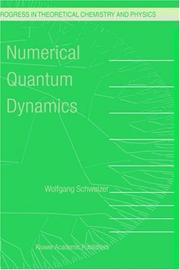
ISBN: 1402002157 1280201037 9786610201037 0306476177 Year: 2001 Volume: 9 Publisher: Dordrecht, Netherlands ; Boston, Massachusetts : Kluwer Academic Publishers,
Abstract | Keywords | Export | Availability | Bookmark
 Loading...
Loading...Choose an application
- Reference Manager
- EndNote
- RefWorks (Direct export to RefWorks)
It is an indisputable fact that computational physics form part of the essential landscape of physical science and physical education. When writing such a book, one is faced with numerous decisions, e. g. : Which topics should be included? What should be assumed about the readers’ prior knowledge? How should balance be achieved between numerical theory and physical application? This book is not elementary. The reader should have a background in qu- tum physics and computing. On the other way the topics discussed are not addressed to the specialist. This work bridges hopefully the gap between - vanced students, graduates and researchers looking for computational ideas beyond their fence and the specialist working on a special topic. Many imp- tant topics and applications are not considered in this book. The selection is of course a personal one and by no way exhaustive and the material presented obviously reflects my own interest. What is Computational Physics? During the past two decades computational physics became the third fun- mental physical discipline. Like the ‘traditional partners’ experimental physics and theoretical physics, computational physics is not restricted to a special area, e. g. , atomic physics or solid state physics. Computational physics is a meth- ical ansatz useful in all subareas and not necessarily restricted to physics. Of course this methods are related to computational aspects, which means nume- cal and algebraic methods, but also the interpretation and visualization of huge amounts of data.
Quantum theory --- Mathematical physics --- Théorie quantique --- Physique mathématique --- Mathematics --- Mathématiques --- EPUB-LIV-FT SPRINGER-B --- Physics. --- Physical chemistry. --- Chemistry, Physical and theoretical. --- Numerical analysis. --- Quantum physics. --- Theoretical, Mathematical and Computational Physics. --- Theoretical and Computational Chemistry. --- Quantum Physics. --- Numeric Computing. --- Physical Chemistry. --- Mathematical physics. --- Mathematics. --- Chemistry. --- Quantum theory. --- Electronic data processing. --- Chemistry, Physical organic. --- Chemistry, Theoretical --- Physical chemistry --- Theoretical chemistry --- Chemistry --- Mathematical analysis --- Quantum dynamics --- Quantum mechanics --- Quantum physics --- Physics --- Mechanics --- Thermodynamics --- Physical mathematics
| Listing 1 - 10 of 17 | << page >> |
Sort by
|

 Search
Search Feedback
Feedback About
About Help
Help News
News